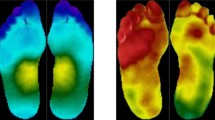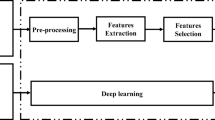Abstract
Machine learning provides a plethora of approaches for tackling categorization problems, i.e., determining whether or not a data item belongs to a particular class. When the objective is to accurately classify new and unknown data, neural networks are frequently an excellent choice. The widespread availability of growing processing power, along with the development of more effective training algorithms, has enabled the application of deep learning principles. To provide superior learning solutions, deep architectures leverage recent breakthroughs in artificial intelligence and insights from cognitive neuroscience. Convolutional neural networks (CNNs) are a subclass of discriminative deep architectures that have demonstrated acceptable performance when processing 2D data with grid-like topologies, such as photos and videos. In this paper, we compare the performance of deep CNNs and machine learning for diabetic foot disease categorization. Diverse machine learning approaches were implemented for classification, viz., decision tree (DT), support vector machine (SVM), quadratic discriminant analysis (QDA), K-nearest neighbors (KNNs), AdaBoost (AB), Gaussian Naïve Bayes (GNA), logistic regression (LR), extra trees (ET), random forest (RF), histogram gradient boosting (HGB). Further, deep convolutional neural networks (CNNs) and transfer learning-based Inception ResNet V2 algorithms were used to analyze in the context of deep learning implementations. In this work, the classification of diabetic foot disease through plantar thermograms was conducted using deep learning implementations. The data augmentation is also done to address the paucity of data. Here, deep learning-based models with augmented dataset prove better outcomes.
Access this chapter
Tax calculation will be finalised at checkout
Purchases are for personal use only
Similar content being viewed by others
References
He T, Zhang Z, Zhang H, Zhang Z, **e J, Li M (2019) Bag of tricks for image classification with convolutional neural networks. In: Proceedings of the IEEE/CVF conference on computer vision and pattern recognition, pp 558–567
Liu Y, Li X, Chen X, Wang X, Li H (2020) High-performance machine learning for large-scale data classification considering class imbalance. Scientific Programming
Nguyen G, Dlugolinsky S, Bobák M, Tran V, García ÁL, Heredia I, Malík P, Hluchý L (2019) Machine learning and deep learning frameworks and libraries for large-scale data mining: a survey. Artif Intell Rev 52(1):77–124
Wang M, Fu W, He X, Hao S, Wu X (2020) A survey on large-scale machine learning. IEEE Trans Knowl Data Eng
Zou J, Huss M, Abid A, Mohammadi P, Torkamani A, Telenti A (2019) A primer on deep learning in genomics. Nat Genet 51(1):12–18
Tian C, Fei L, Zheng W, Xu Y, Zuo W, Lin CW (2020) Deep learning on image denoising: an overview. Neural Netw
Sze V, Chen YH, Yang TJ, Emer JS (2020) Efficient processing of deep neural networks. Synth Lect Comp Arch 15(2):1–341
Geirhos R, Jacobsen JH, Michaelis C, Zemel R, Brendel W, Bethge M, Wichmann FA (2020) Shortcut learning in deep neural networks. Nat Mach Intell 2(11):665–673
Dhillon A, Verma GK (2020) Convolutional neural network: a review of models, methodologies and applications to object detection. Progr Artif Intell 9(2):85–112
Fang Z, Wang Y, Peng L, Hong H (2020) Integration of convolutional neural network and conventional machine learning classifiers for landslide susceptibility map**. Comput Geosci 139:104470
Al-Haija QA, Adebanjo A (2020) Breast cancer diagnosis in histopathological images using ResNet-50 convolutional neural network. In: 2020 IEEE international IOT, electronics and mechatronics conference (IEMTRONICS). IEEE, pp 1–7
Ibrahim Y, Wang H, Adam K (2020) Analyzing the reliability of convolutional neural networks on GPUs: GoogLeNet as a case study. In: 2020 International conference on computing and information technology (ICCIT-1441). IEEE, pp 1–6
Santos TI, Abel A, Wilson N, Xu Y (2021) Speaker-independent visual speech recognition with the inception V3 model. In: 2021 IEEE spoken language technology workshop (SLT). IEEE, pp 613–620
Wang J, He X, Faming S, Lu G, Cong H, Jiang Q (2021) A real-time bridge crack detection method based on an improved inception-Resnet-v2 structure. IEEE Access
Russakovsky O, Deng J, Su H, Krause J, Satheesh S, Ma S, Huang Z, Karpathy A, Khosla A, Bernstein M, Berg AC (2015) Imagenet large scale visual recognition challenge. Int J Comput Vision 115(3):211–252
Zhang Y, Tian Y, Kong Y, Zhong B, Fu Y (2020) Residual dense network for image restoration. IEEE Trans Pattern Anal Mach Intell 43(7):2480–2495
Zhao R, Yan R, Chen Z, Mao K, Wang P, Gao RX (2019) Deep learning and its applications to machine health monitoring. Mech Syst Signal Process 115:213–237
Minaee S, Boykov YY, Porikli F, Plaza AJ, Kehtarnavaz N, Terzopoulos D (2021) Image segmentation using deep learning: a survey. IEEE Trans Patt Anal Mach Intell
Kumar N, Verma R, Sharma S, Bhargava S, Vahadane A, Sethi A (2017) A dataset and a technique for generalized nuclear segmentation for computational pathology. IEEE Trans Med Imaging 36:1550–1560
Rishu C, Verma S, Krishna CR (2017) A survey on driver behavior detection techniques for intelligent transportation systems. In: 2017 7th International conference on cloud computing, data science and engineering-confluence. IEEE, pp 36–41
Kavakiotis I, Tsave O, Salifoglou A, Maglaveras N, Vlahavas I, Chouvarda I (2017) Machine learning and data mining methods in diabetes research. Comput Struct Biotechnol J 15:104–116
Temurtas H, Yumusak N, Temurtas F (2009) A comparative study on diabetes disease diagnosis using neural networks. Expert Syst Appl 36:8610–8615
Ribeiro ÁC, Barros AK, Santana E, Príncipe JC (2015) Diabetes classification using a redundancy reduction preprocessor. Res Biomed Eng 31:97–106
Saini K, Marriwala N (2022) Deep learning-based face mask detecting system: an initiative against COVID-19. In: Emergent converging technologies and biomedical systems. Lecture notes in electrical engineering, vol 841
Pawar AB, Jawale MA, William P, Chhabra GS, Dhananjay Rakshe S, Korde SK, Marriwala N (2022) Implementation of blockchain technology using extended CNN for lung cancer prediction. Measurement: Sensors 24
Hernández-Contreras D, Peregrina-Barreto H, Rangel-Magdaleno J, Renero-Carrillo F (2019) Plantar thermogram database for the study of diabetic foot complications. IEEE Dataport. https://doi.org/10.21227/tm4t-9n15. Accessed on 31 Oct 2019
Joseph FJJ, Nonsiri S, Monsakul A (2021) Keras and TensorFlow: a hands-on experience. In: Advanced deep learning for engineers and scientists. Springer, Cham, pp 85–111
Sumathi D, Alluri K (2021) Deploying deep learning models for various real-time applications using Keras. In: Advanced deep learning for engineers and scientists. Springer, Cham, pp 113–143
Author information
Authors and Affiliations
Corresponding author
Editor information
Editors and Affiliations
Rights and permissions
Copyright information
© 2023 The Author(s), under exclusive license to Springer Nature Singapore Pte Ltd.
About this paper
Cite this paper
Khullar, V., Tiwari, R.G., Agarwal, A.K., Angurala, M. (2023). Transferring Pre-trained Deep CNNs on Plantar Thermograms for Diabetic Foot Disease. In: Marriwala, N., Tripathi, C., Jain, S., Kumar, D. (eds) Mobile Radio Communications and 5G Networks. Lecture Notes in Networks and Systems, vol 588. Springer, Singapore. https://doi.org/10.1007/978-981-19-7982-8_9
Download citation
DOI: https://doi.org/10.1007/978-981-19-7982-8_9
Published:
Publisher Name: Springer, Singapore
Print ISBN: 978-981-19-7981-1
Online ISBN: 978-981-19-7982-8
eBook Packages: EngineeringEngineering (R0)




